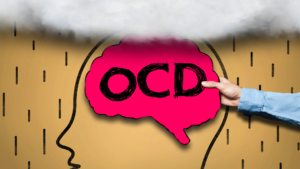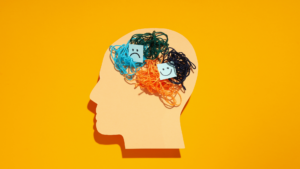
Prescription drugs are everywhere, and it’s essential to understand the risks and benefits they can have on our health. From medication that helps with pain relief to treatments for diseases and injuries, there are myriad ways prescription drugs can help us.
But there are also potential side effects that need to be taken into consideration. This blog post will explore the various types of prescription drugs, their uses, and their associated risks and benefits.
Types of Prescription Drugs and Their Uses
There are four main types of prescription drugs: antibiotics, antidepressants, anti-anxiety medications, and painkillers. Each type of drug has its risks and benefits, so it’s essential to understand how each one works before taking them.
- Antibiotics are used to treat infections caused by bacteria. They can be taken orally or injected, and they work by killing the bacteria or preventing them from reproducing. Common side effects of antibiotics include diarrhea, nausea, and vomiting. Antibiotics can also cause allergic reactions in some people.
- Antidepressants treat depression, anxiety, and other mental health disorders. They work by affecting the chemicals in the brain that regulate mood. Common side effects of antidepressants include weight gain, sexual dysfunction, and headaches. Antidepressants can also increase the risk of suicidal thoughts in some people.
- Anti-anxiety medications are used to treat anxiety and panic disorders. They affect the chemicals in the brain that regulate mood and anxiety levels. Common side effects of anti-anxiety medications include drowsiness, dizziness, and dry mouth. Anti-anxiety medications can also increase the risk of addiction in some people.
- Painkillers are used to relieve pain from injuries or chronic conditions like arthritis. They work by blocking pain signals from reaching the brain. Common side effects of painkillers include constipation, drowsiness, and dizziness. Painkillers can also be addictive and lead to overdoses if taken in large doses.
Benefits of Taking Prescription Drugs
There are many benefits to taking prescription drugs as prescribed by a doctor. They can help treat a wide variety of health conditions and improve the quality of life for many people.
Some expected benefits of taking prescription drugs include:
Relief from symptoms
Prescription medications can provide relief from the symptoms of a wide variety of health conditions. This can allow people to feel better and live more comfortable lives.
Improved quality of life
In many cases, taking prescription drugs can improve a person’s overall quality of life. This can include increased energy levels, mood improvement, and mental clarity.
Increased lifespan
Sometimes, prescription medication can prolong a person’s life expectancy. This is especially true for conditions that are chronic or life-threatening.
Improved function
Many prescription drugs can improve a person’s ability to function in daily activities. This can make working, taking care of household responsibilities, and enjoying leisure activities more manageable.
Risks of Taking Prescription Drugs
There are both risks and benefits to taking prescription drugs. It’s essential to understand both before deciding whether or not to take a particular medication.
The risks of taking prescription drugs can include the following:
Allergic reactions
Some people may be allergic to the active ingredients in certain medications. This can cause potentially serious side effects, including difficulty breathing, swelling of the face or throat, and hives. If you experience any of these symptoms after taking a medication, seek medical attention immediately.
Drug interactions
Another potential risk of taking prescription drugs is that they may interact with other medications we’re taking and certain foods or drinks. This can cause dangerous side effects or make the pills less effective. Be sure to talk to a doctor or pharmacist about potential drug interactions before starting any new medication.
Dependence
In some cases, people may develop a dependence on prescription drugs, particularly those taken for pain relief or to treat anxiety or other mental health conditions. This means they may feel like they need to keep taking the medication to function normally.
Despite these risks, there are also many benefits to taking prescription drugs when necessary. In many cases, the benefits outweigh the risks and allow people to live healthier, more productive lives.
How to Reduce the Risks of Taking Prescription Drugs
We can do a few things to help reduce the risks involved in taking prescription drugs. First, ensure we understand any medication’s potential side effects. If we have any questions, ask a doctor or pharmacist.
Second, take medications as directed. Do not skip doses or change the dosage without talking to a healthcare provider. Third, tell the doctor about other medicines, including over-the-counter drugs and supplements. This will help avoid potential drug interactions.
Finally, stay alert for signs of possible medication problems, such as changes in how we feel or unusual side effects. If we experience anything out of the ordinary, be sure to contact a doctor right away.
However, while prescription drugs can be effective, they can lead to addiction. For instance, Adderall, a commonly prescribed medication for ADHD, can be highly addictive if not used as directed. In this situation, exploring alternative treatment options such as ibogaine, can be beneficial. For those who might want to approach this treatment option, consider looking into costs of treatment by searching online “ibogaine treatment centers mexico cost” or for other locations that provide the option. Moreover, consider conducting research and consulting with healthcare professionals to ensure safety and efficacy.
Similarly, anti-anxiety medicines can cause addiction if you use them for a long time. In such a situation, you may turn to other effective ways to treat stress. For instance, practising meditation can calm down the mind. Likewise, you might experience an enhanced mood by exercising regularly. You can also try aromatherapy or a swedish massage in Fuquay Varina, NC or other locations that can help you in alleviating stress and easing anxiety symptoms.
Medicating Responsibly is the Right Prescription for a Healthy Life
Prescription drugs can be a valuable tool in maintaining and improving our health. Still, it is crucial to understand the risks before taking any medication. With knowledge of the potential risks, we can make an informed decision about whether or not prescription medications are proper for us.
Additionally, suppose we have any questions or concerns regarding our medications. In that case, we always talk with our doctor and pharmacist to ensure that we make the best decisions regarding taking care of our health.



